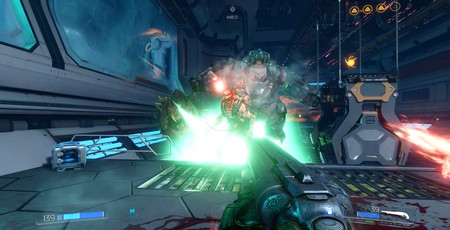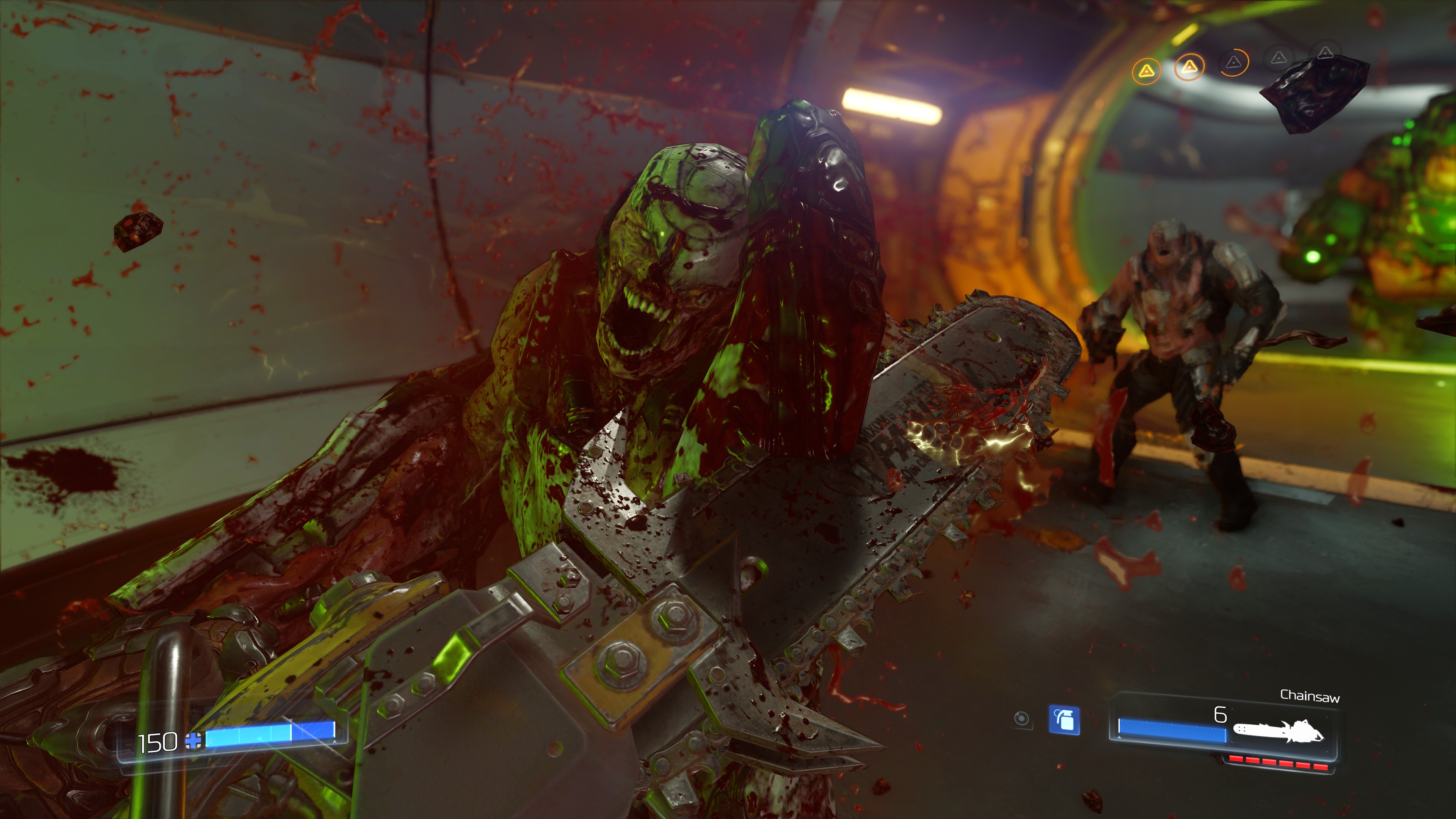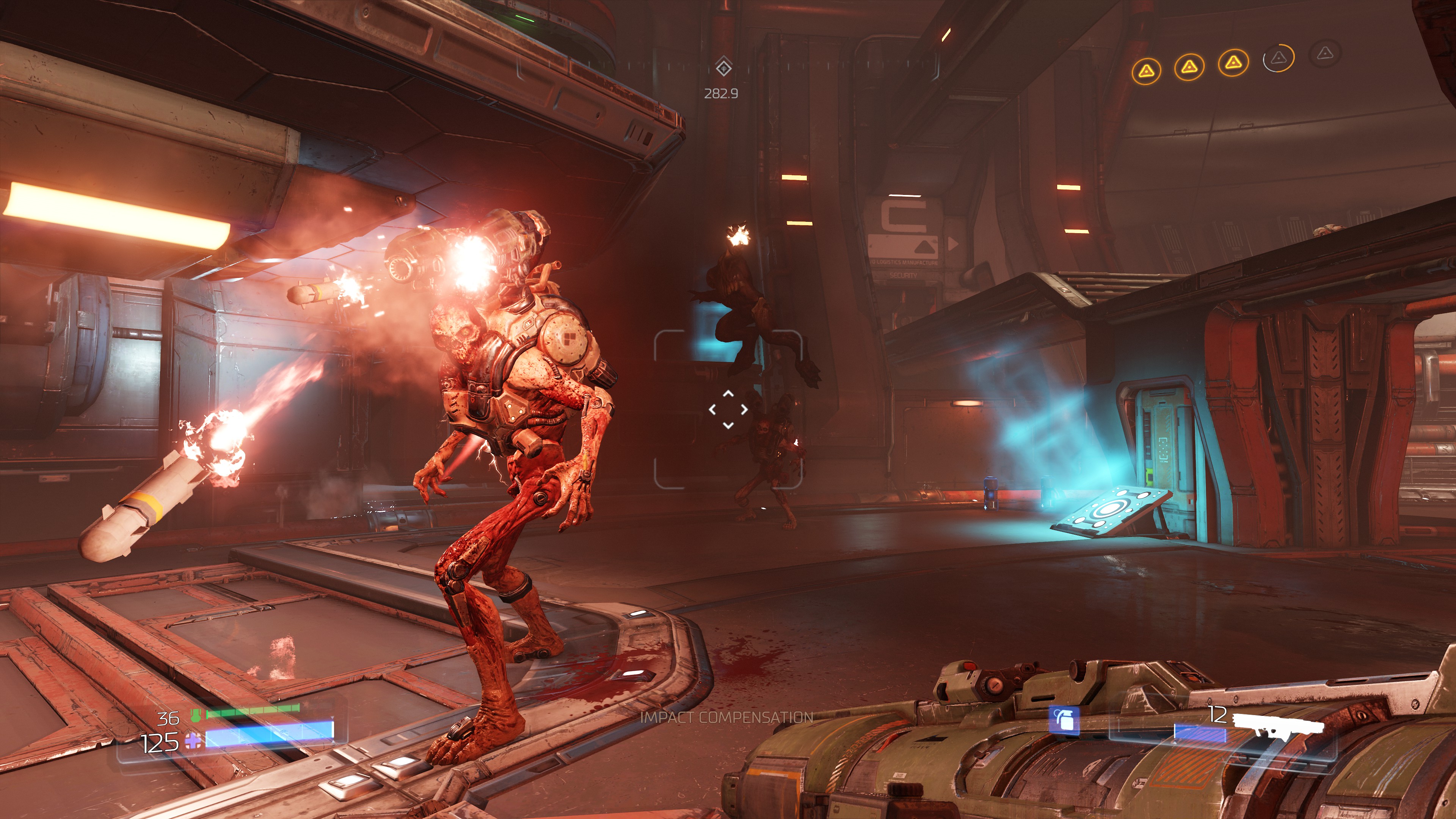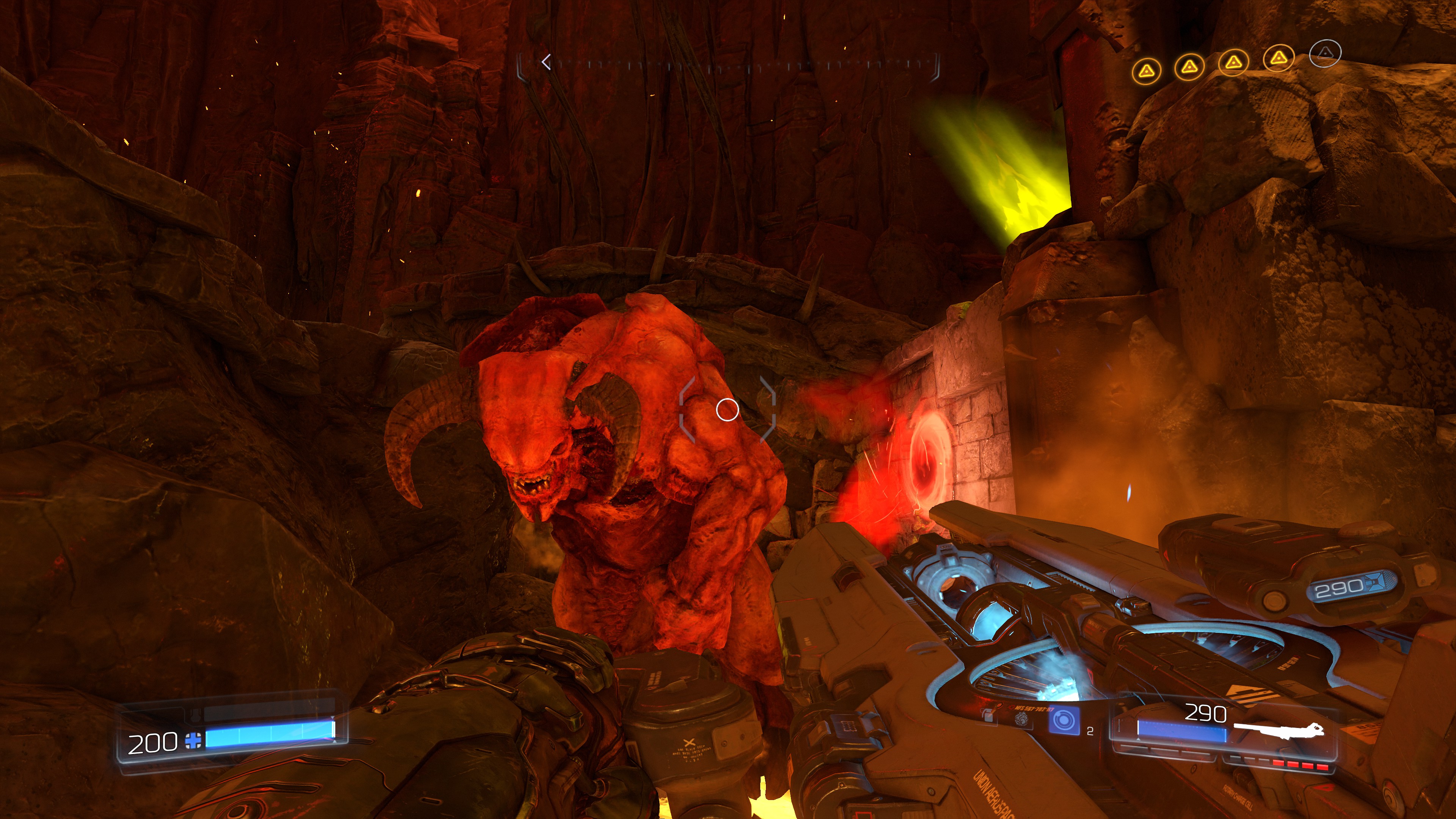
I struggle to believe that id’s reboot of Doom is now four years old. It still registers as a new game in my mind, a bold and exciting prospect that gets me giddy with anticipation when I think about playing it. Writing a retrospective about it as another new Doom veers on the horizon feels almost sad in a way, like my brain is losing the ability to track the passage of time. Is this what old people feel like? Are there people out there who still think of the original Doom as the new Doom?

Anyway, as Doom Eternal approaches with all the destructive potential of a BFG blast, I wanted to return to id’s reimagining of that iconic original, to see if that giddy sensation it gives me is still validated. Time is the ultimate critic, after all. Reviewing anything with my paltry human hands and brain always comes with the vague worry that I might find myself on the wrong side of it, that I might become the person who thought Deus Ex was rubbish, or that Duke Nukem Forever was good.
As it transpires, Doom mandates no such worries. It’s as fantastically thrilling in 2020 as it was in 2016. In fact, it doesn’t seem to have aged at all in four years, which is quite an astonishing achievement. Bear in mind that four years is the distance between Daikatana and Half Life 2, or between Knights of the Old Republic and Crysis. Games can change dramatically in that space of time. Doom could have released yesterday and I wouldn’t suspect anything. I’m beginning to wonder if id have formed some kind of demonic pact…

Returning to Doom has mainly solidified most of my previous thoughts about it. In my original review, I described 2016’s Doom as less a return to the series’ roots, and more of a direct response to Doom 3. This is even more evident the second time around, not just in terms of how the reboot responds to Doom 3’s problems (slow movement, underwhelming guns, an overemphasis on dramatic storytelling etc), but also the elements of Doom 3 that worked. Turning the UAC from a nondescript sequence of brown corridors into a Black-Mesa-like facility that has its own environmental logic was the right move 2004, just as it is in 2016. Many of the enemy designs are also based upon Doom 3’s ideas, such as giving the Imps spider-like agility, and turning the Hellknights into brawny demonic wrestlers.
Indeed, I think of Doom less as an old-school shooter, and more a modern game that channels its energies in a different way to other modern shooters. Whereas games like Call of Duty rely heavily on scripted sequences to channel their action, what Doom attempts is to replicate the moment-to-moment thrill of multiplayer deathmatch in a singleplayer campaign. The classic shooters Doom has most in common with are not Doom or Duke or Blood or whatever, but Unreal Tournament and Quake III.

There are a couple of elements to this. The most obvious one is how its levels are heavily inspired by multiplayer arenas, featuring bounce-pads and teleports and multiple floors and lots of room to circle-strafe. But the more significant feature is that its demons are basically AI multiplayer bots. Go back to any of the classic shooters, be it Doom or Quake or Blood, and you’ll be surprised by just how static the enemies are. They might move around a bit, and they’ll certainly shoot you a lot, but they don’t feel like they’re actively trying to outmanoeuvre you.
By comparison, Doom’s demons are basically the best and most diverse group of multiplayer bots ever designed. I’d be fascinated to trace the different shapes they make as they move around an arena, how the Revenant’s movement patterns differ from the Imp or the Hellknight, all running, leaping, arcing around you in slightly different ways. The patterns to their moves and attacks almost transform Doom into a rhythm game. Each demon is a button that must be struck at the right moment, only instead of getting a score rating you’re treated to a shower of blood and viscera.

If your opponents provide the rhythm, then it’s you who provides the beat, via the deadliest range of musical instruments ever devised. Here, Doom has its cake and eats it between the classic and the modern. Most of the arsenal is based upon that of the original game, your shotguns, super shotguns, plasma guns and chainguns are all present and function exactly as you’d expect. But Doom also lets you modify those weapons with new secondary fires that radically alter how those guns function. Do you want your shotgun to fire three shells at once, or one explosive shell? Do you want to spool-up your chaingun so it’s ready to fire, or transform it into a mobile turret that shreds enemies to bits?
On top of that, there are the glory kills, Doom’s most in-your-face new feature that lets you gruesomely execute enemies in an astonishing number of ways. It’s quite remarkable just how many unique animations there are, at least one for attacking every enemy at a different angle. But the true genius of this feature is how executing an enemy causes it to spawn health, just as killing an enemy with a chainsaw causes them to drop ammo.

The result of this is you’re constantly searching for the most efficient way to butcher the demonic hordes while simultaneously keeping yourself alive and in the fight. You know that two headshots with the gauss cannon will kill a mancubus. But you’re also low on ammo, so should you chainsaw it instead? Yet that would use up most of your chainsaw fuel, so perhaps you’re better off using it on a smaller enemy, and then seeing to the mancubus. Such thoughts are constantly flowing through your head while playing Doom, swirling around and crashing together like a group of dinghies on river rapids, and it’s this acceleration of your own thought processes that makes Doom such a furious experience.
Aside from a couple of issues, like the bewildering presence of a codex and those occasional breaks in the action for scripted story sequences, Doom is an almost perfectly balanced game. As such, I’m highly intrigued to see how Doom Eternal’s changes and additions can fit into that balance, and whether it can make new a game that still feels fresher than a mentholated hurricane four years down the line.


MSI MPG Velox 100R Chassis Review
October 14 2021 | 15:04







Want to comment? Please log in.